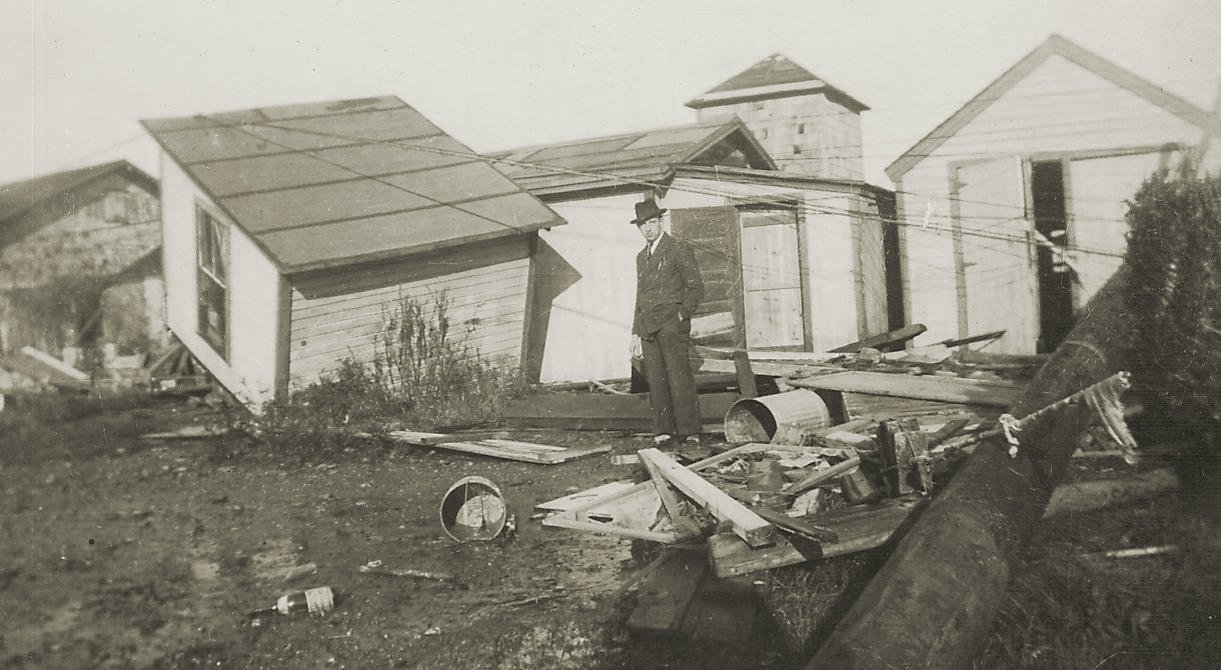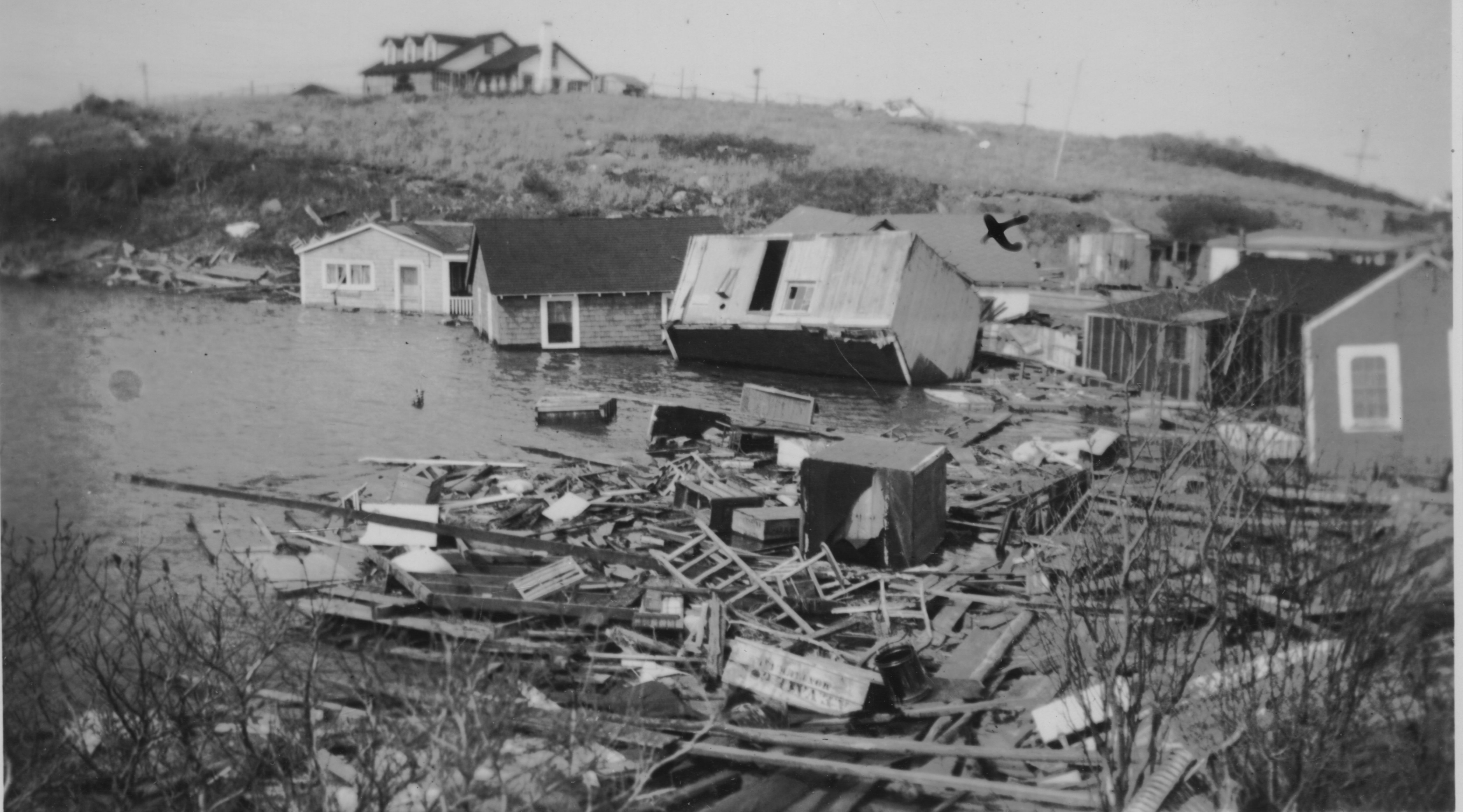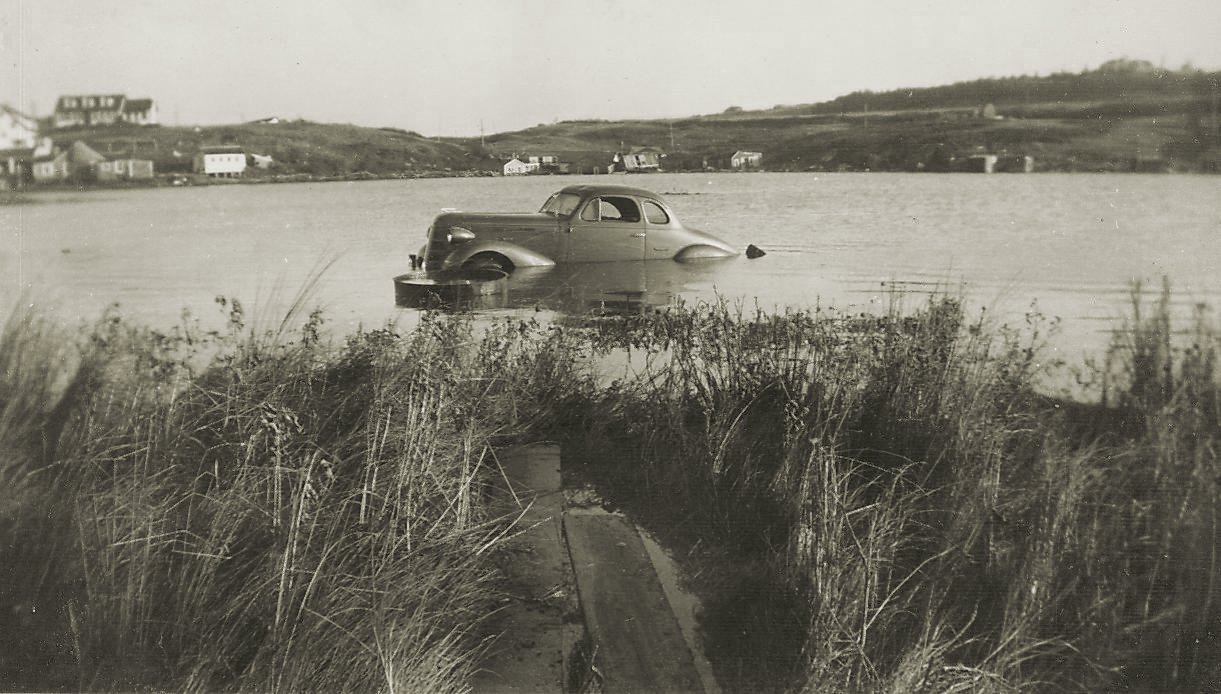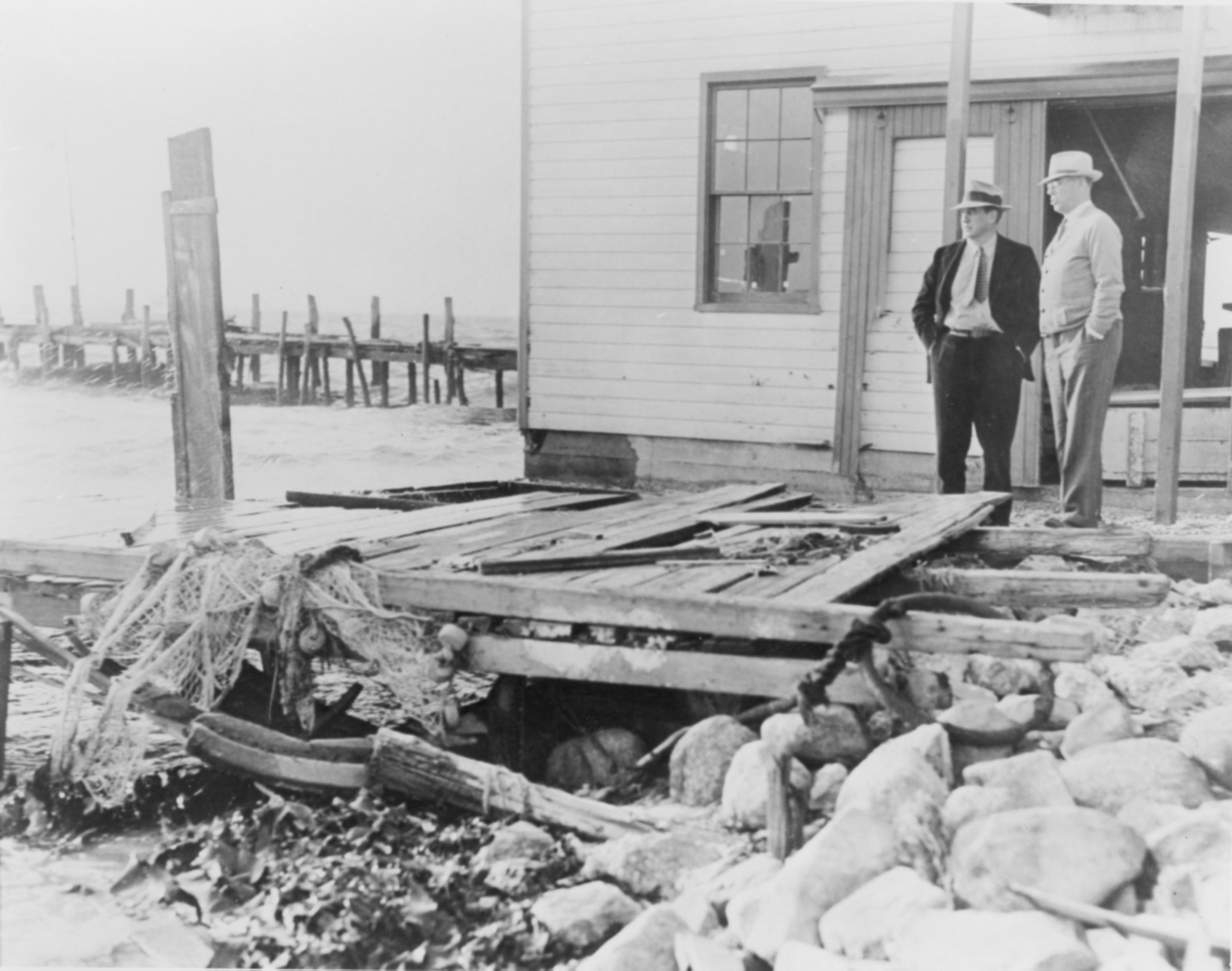
“Mrs. Gunnar Strandberg, whose husband was employed at the Willard restaurant, was helping him put boards over the restaurant windows when the storm struck. Unable to get back to her house in the village until the hurricane abated, she was greatly concerned for the safety of her two-year-old infant, who was alone there.”
“As soon as she was able, she hurried home. The child was safe and unharmed, but there were three other houses resting against the Strandberg home, and an automobile had been slammed through the wall of the dining room.” — A Wind to Shake the World

“In Montauk, Gene McGovern had no sooner entered the post office when the wind and tide came up so suddenly that he was unable to leave. After kicking a window, he managed to escape from the building, which had started to move and was eventually deposited some 400 feet from where it had stood.” – Hurricane in the Hamptons, 1938


Vinnie Grimes, in a 2002 oral history interview:
“I was 10 years old then and up at the school we didn’t know what a hurricane was, we knew it was one heck of a storm.”
“Some of the kids from down the bay peeked out the door which we weren’t supposed to do and saw nothing but telephone poles in the bay. Well of course there was so much spray going with the wind and everything that you couldn’t see too well. And they figured the bay was just flooded out.”
“And my grandfather came up and got us from school, walked up. As we were walking down the hill, the Chalet had a, must have been a 16-car garage — and that roof took off like a napkin and flew over our heads as we were walking down the hill to my grandparents’ house.”
“Now, we had no telephone because those wires were down. We had no idea how my mother and two brothers were, or my father or where they were. And we didn’t get that straightened out for about three days.”


“From East Hampton to Montauk, it was fishermen who paid the storm’s highest toll. A month after the storm, the fatality count there stood at eight, with another seven unaccounted for – presumably claimed by the sea.” – Hurricane in the Hamptons, 1938

Reply or Comment